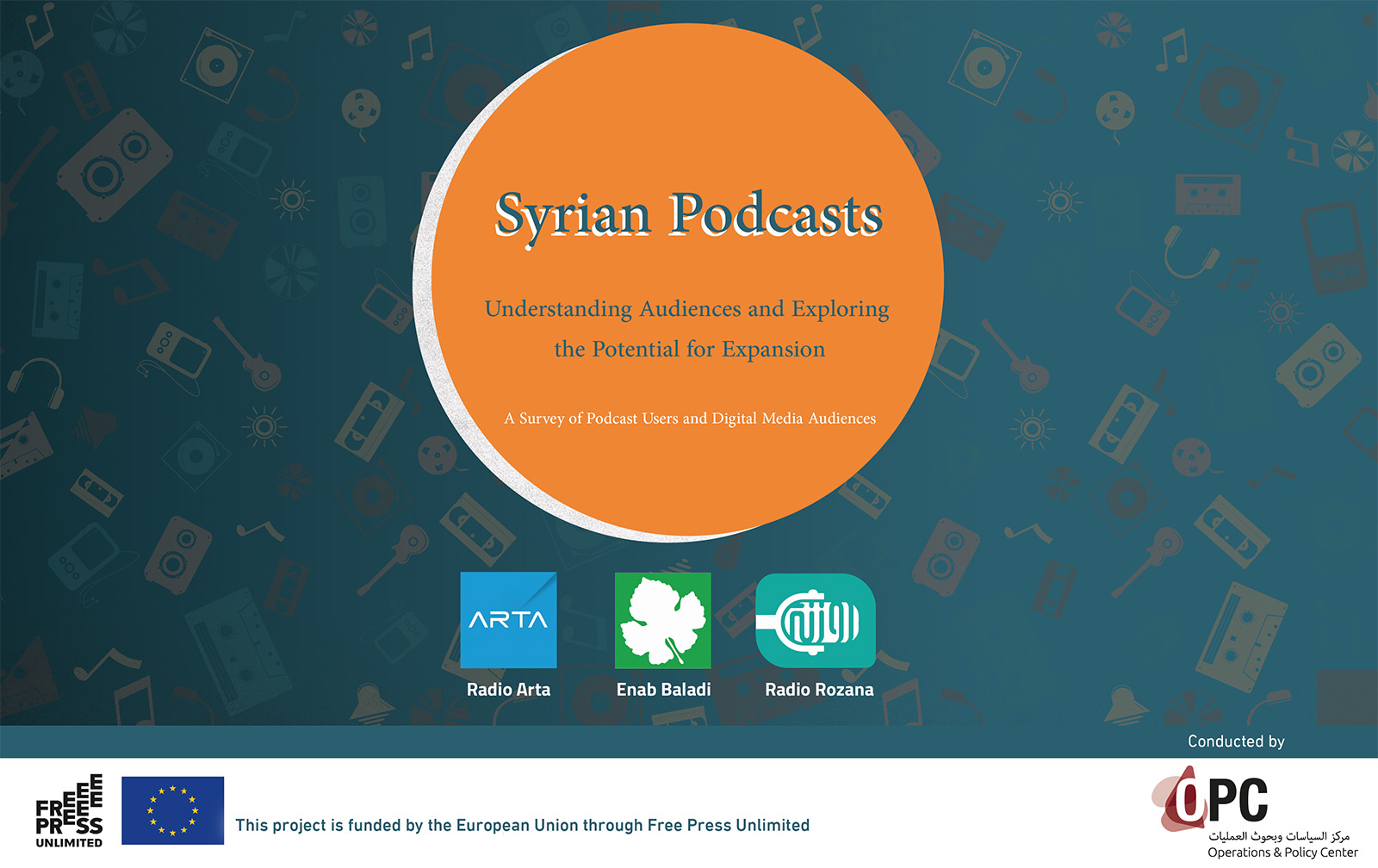
Executive Summary
Podcasting as an emerging medium continues to capture global interest; as a result, more Syrian individual and institutional producers are utilizing it. A number of promising Syrian podcasts have emerged in recent years, and their producers are now looking to accelerate the medium’s use in-country, driven by the belief that podcasting, with its ease of use, calm communication environment, and the ability to cover topics rarely broached by traditional media, can add something to the fragmented and overactive Syrian communicative space.
However, producers’ attempts to generate content take place within a large vacuum of information about the characteristics of the Syrian podcast audience. Syrians’ experience with podcasts has, to date, never been systematically researched. Even the periodic reports issued by some international organizations about Syrian media audiences do not cover podcasts.
This study was initiated by three Syrian media organizations (Arta FM, Enab Baladi newspaper, and Radio Rozana) as the first step in understanding the creation and distribution of podcasts in Syria. Its scope includes not only the characteristics of the producer and the content, but also the demographics, habits, and preferences of the audience. Such a broad scope helps to provide podcast producers with the necessary feedback to develop production and marketing strategies.
This study took a survey approach embodied in the design of a two-model questionnaire targeting a sample of 600 respondents, divided equally between the podcast audience and the non-podcast digital media audience. The results of the quantitative data analysis were supported by a series of focused discussion sessions and in-depth interviews with podcasters, producers, and individuals from the Syrian media sector.
The study concluded that the Syrian communicative space is a suitable environment for the growth and development of podcasts, evidenced by the high percentage of internet access and rates of smartphone use, and the reliance on both in accessing media content. According to the sample, the audience for Syrian podcasts consists mainly of young people 15–34 years old (not surprisingly). Women are more inclined to listen to podcasts than men. Syrians living in-country are more likely to use podcasts than those abroad. Education level did not appear to have a significant impact on whether a person was a podcast listener or not.
The study also showed that a large percentage of our Syrian digital media audience sample had never heard of podcasts, indicating the need for efforts to introduce and promote the medium. As for the sub-sample of podcast listeners, the study showed a low level in weekly listening rates; it also showed that the majority of the sub-sample listened to podcasts during their free time, breaks, or before bed, indicating lower rates of podcast use as a simultaneous practice with other activities.
The sample data showed that users prefer short podcast episodes. The range of interest topics was wide and closely proportioned, with the largest proportions being news content and social/cultural content. Respondents also greatly preferred podcasts in the Syrian colloquial dialect over classical Arabic.
The study produced a set of recommendations for Syrian podcast producers, including:
- Recommendations related to content in terms of formal features or topics
- Recommendations related to access
- Preliminary features of what could become a long-term strategy to “localize” podcasts within the Syrian environment,
through podcast promotion via traditional media (especially television) and via social media (especially Facebook) - The importance of periodic and reliable feedback on the Syrian public, whose indicators are expected to witness changes and fluctuations during the next three to five years
To achieve the goal of localizing podcasts, the study proposes establishing a network of Syrian podcast producers, formed
into a centralized body capable of mobilizing resources and coordinating their audiences to serve the growth and
development of Syrian podcasts.
The last section of the study deals with the issue of the economic feasibility of podcasts, presents global developments in
the field, explores the podcast market and its future prospects in Syria, and reviews the potential options for Syrian
producers in the interim and in the future.